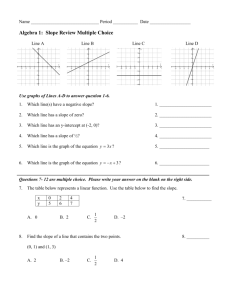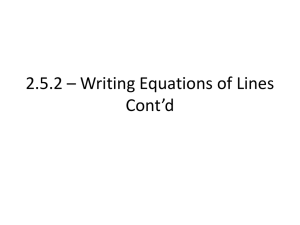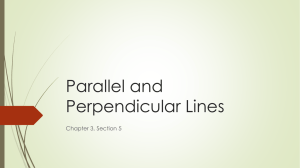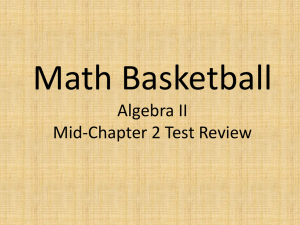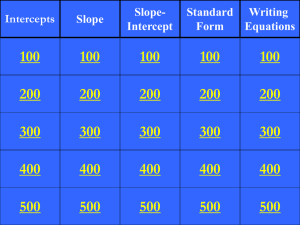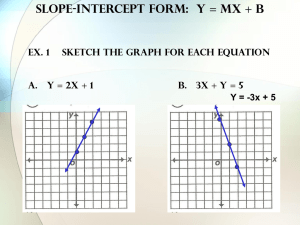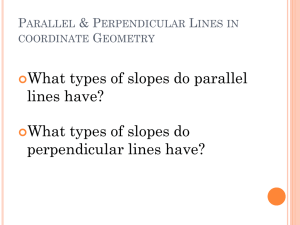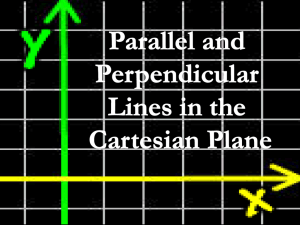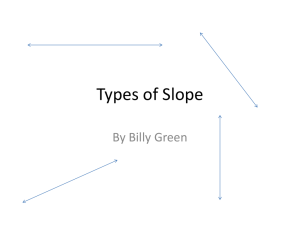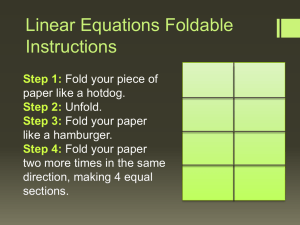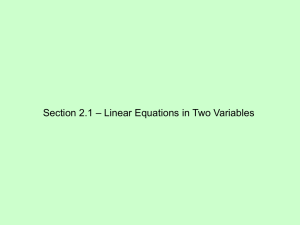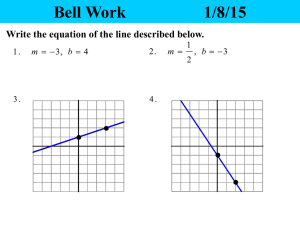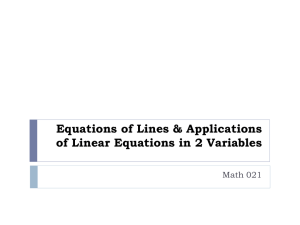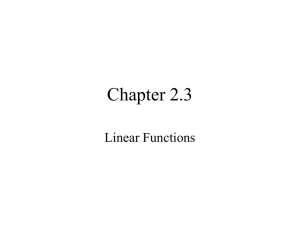Section 4.3 notes
advertisement
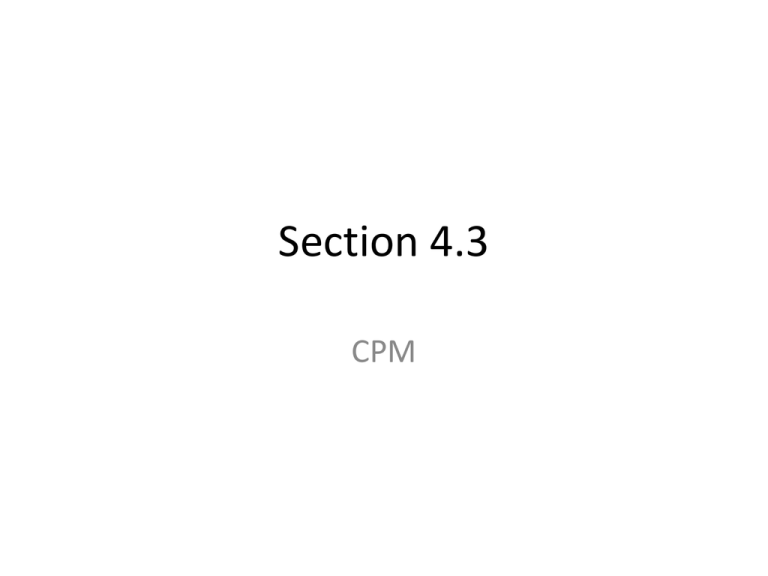
Section 4.3 CPM Your work in section 4.2 did not include writing a linear function in slope intercept form, but you can certainly do this. Example: Write the symbolic representation of the linear function with a slope of 3 and y-intercept of –8. 5 It’s easy, RIGHT!!!!!!! But, what if we are not given the slope and y-intercept. Perhaps we’re given the slope and some other point on the line or just two points on the line. OH NO, what do we do? We can still use slope-intercept form y mx b ______________________. The slope is still m, and x and y can be replaced with the point (or either point if two are given). Now you just have to solve for the yintercept (b) Recall: 2 lines are perpendicular iff they have the opposite reciprical slope ______________________________________. 2 lines are parallel iff th ey h a ve th e sa m e slo p e _____________________________. Example: Write the symbolic representation of a linear function whose graph has the given characteristics a) passes through the points 2, 4 an d 6, 8 48 26 m 1 N ow pick a pt to use 2, 4 m 1 2, 4 y mx b 4 1(2) b 2b y 1x 2 contains the point (-3, 4) and parallel to –x+3y=150 P arallel lines have sam e slope – x 3y 150 x x so this line has the sam e slope m 1 ( 3, 4) 3 3 y x 150 3 y 3 x 3 50 3 4 1 ( 3) b 3 4 1 b 5b y 1 3 x5 contains the point (-4,2) and perpendicular to x+4y=16 Perpendicular lines have the opp recip slope x 4 y 16 y x m 4 ( 4, 2) 1 2 4( 4) b 2 16 b 4 4 Now flip and switch the slope 18 b y 4 x 18 Write an equation of the line that passes through (4,6) and is parallel to the line that passes through (6,-6) and (10,-4) So, first we must find the slope of this line m 1 (4, 6) 2 6 4 6 10 6 1 (4) b 2 2 4 1 2 Now we can use this slope since they are parallel 6 2b 4b y 1 2 x4

